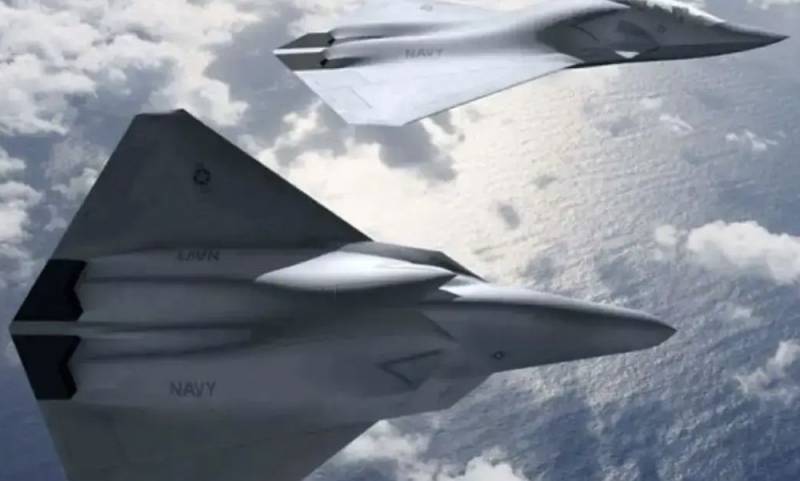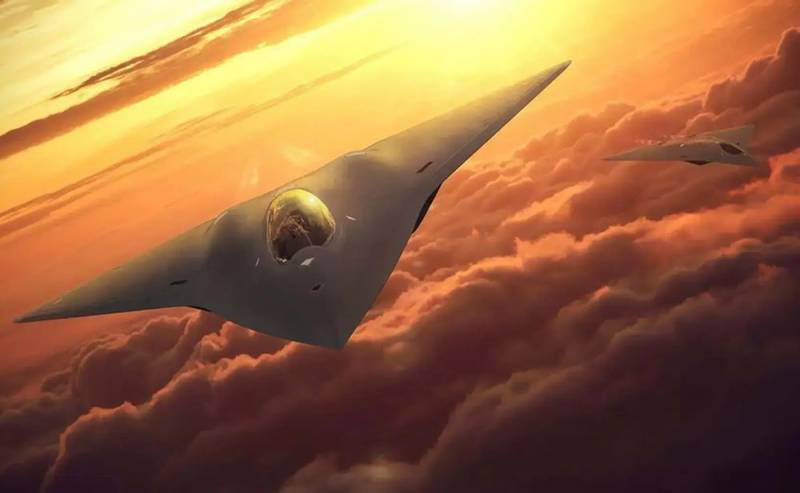The Drive told about the sixth generation fighter program in the United States
Currently, there are at least three Next-Generation Air Dominance (NGAD) aircraft demonstrators, but it is not known whether all of them are in the form of flying aircraft. In this case, we are talking about a joint project of the US Air Force and American aircraft manufacturers to create an inconspicuous sixth-generation manned tactical fighter. This is reported by the American edition of The Drive, giving details of what is happening.
According to the publication, the competition for the future main contract with the US Air Force is now reduced to two general contractors or groups of contractors. The existence of three NGAD demonstrators indicates that three main contractors or groups were involved at one point, and that this number has since been reduced to two. Likely candidates were Boeing, Lockheed Martin, and Northrop Grumman—as established heavyweights in terms of US combat aircraft manufacturers, these three should always be at the center of the competition.
A final decision on what is now considered a winner-take-all competition is expected in 2024. So far, however, the Air Force has not released any details about the prime contractors involved in NGAD, or possible cooperative arrangements whereby different companies can work together on their proposals. Unlike previous fighter competitions, NGAD remains classified, although some information is still seeps.
The NGAD fighter will have to replace the F-22. But NGAD is not only manned aircraft, but a broader initiative that also includes the development of advanced drones with a high degree of autonomy, new jet engines, weapons, sensors, EW / EW systems, networked ecosystems, combat management capabilities and much more. And not only the Air Force, but also the US Navy.
The NGAD combat aircraft will be very high-tech, with a long range and payload, which will be especially applicable to future conflicts in the Asia-Pacific region. It will cost several hundred million dollars per unit. Each of these aircraft is expected to be equipped with a variety of exotic features and subsystems, including broadband stealth, advanced electronics and other "spectral" warfare capabilities.
Companies that lose the competition will also not be left out of cash flows and orders. The winner will receive the main contract for fighters, and the losers will begin to produce not cheap Collaborative Combat Aircraft (CCA) drones and a lot of all kinds of equipment, components, weapons and other related products. Moreover, the US Air Force will order hundreds or even thousands of drones of various other types from the losers to support NGAD and broader aviation capabilities. There is also the possibility that one or both of the losing candidates may even be involved in the production of the selected combat aircraft.
The Air Force wants to bring NGAD fighters into service early next decade. Even with one or more demonstrators flying, it's an extremely tight schedule considering the contract for the EMD leg isn't scheduled until next year. The Air Force is also pushing the program to avoid the "malpractice" it says has negatively impacted the F-35.
- specified in the publication.
Another factor in NGAD is the relationship between this US Air Force program and a separate US Navy equivalent program, the development of the sixth generation manned combat jet known as the F/A-XX. The Navy has very clear requirements and is investing heavily in its own program.

While we know that there is at least some overlap between the two programs, we do not know how much or to what extent one contractor's success in the Air Force program might influence the choice of the Navy in its own version. However, the fact that the Navy will choose its own NGAD manned aircraft means that even the Air Force who lost the tender could win the Navy's tender and would probably be in a better position to build a demonstrator.
- stated in the material.
Analysts at the publication suggested that the US Air Force NGAD program is gaining momentum and, although there is little reliable data, there is fierce competition in the shadows, the prize of which will be the production of an advanced tactical combat aircraft. It will serve for many decades and will become the centerpiece of the entire American NGAD program.

Information